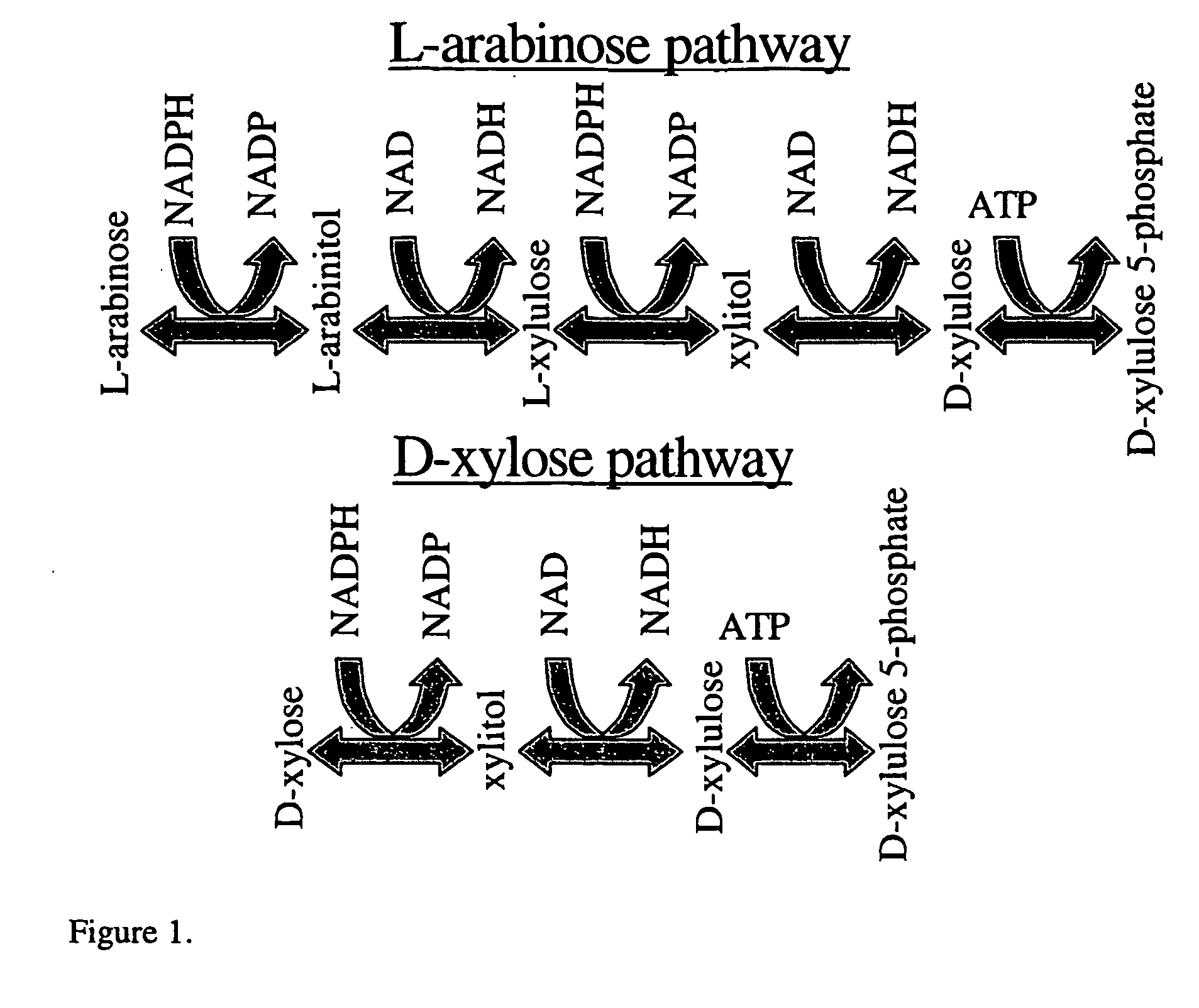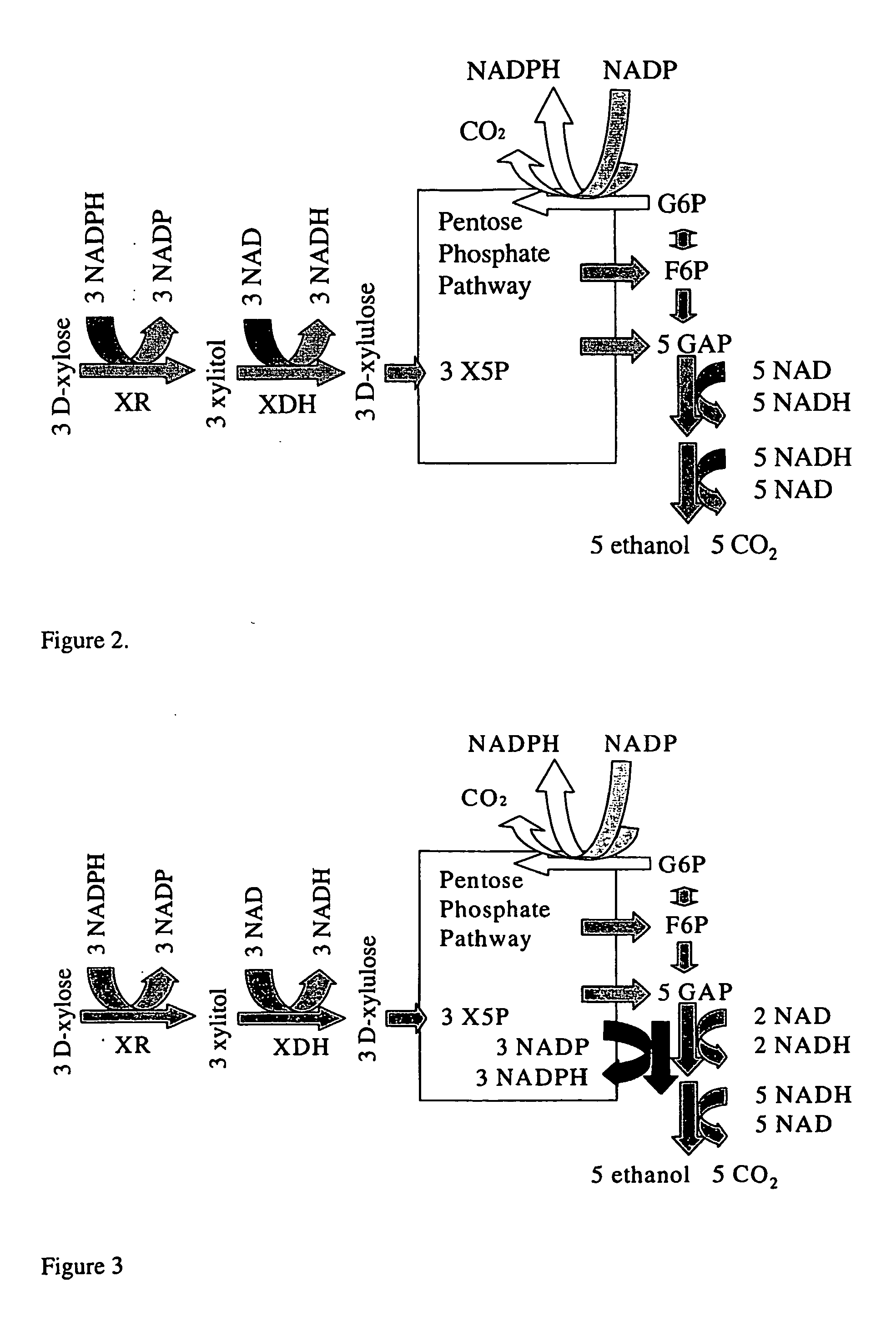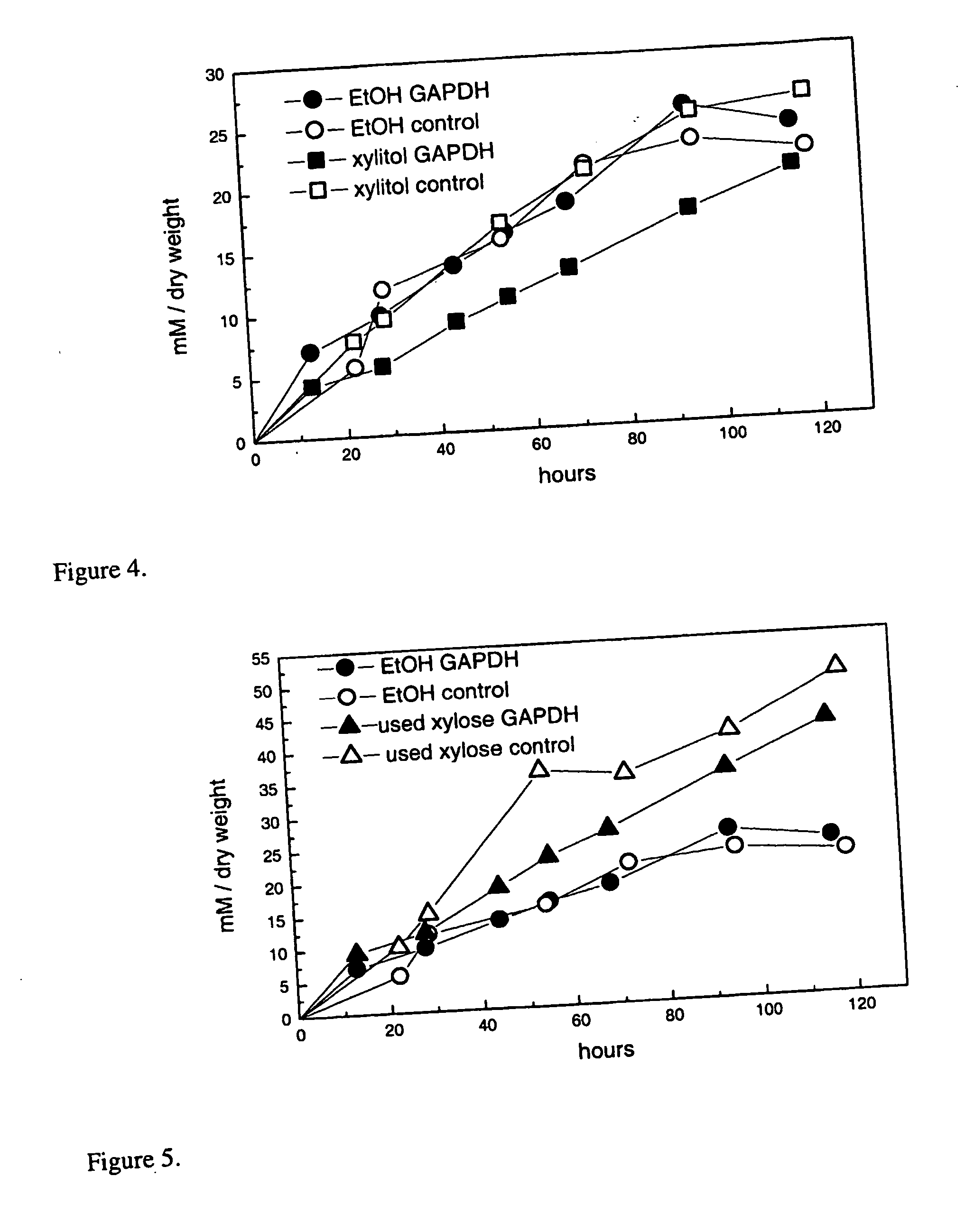Fungal micro-organism having an increased ability to carry out biotechnological process(es)
a technology of biotechnological process and microorganism, which is applied in the field of fungal microorganisms having an increased ability to carry out biotechnological process (es), can solve the problems of unfavorable anaerobic pentose fermentation, so as to reduce or eliminate the need to regenerate n
- Summary
- Abstract
- Description
- Claims
- Application Information
AI Technical Summary
Benefits of technology
Problems solved by technology
Method used
Image
Examples
example 1
Screening for Suitable Redox Enzymes
[0052] We used a screening system for NADP(H) related redox enzymes that is based on a deletion of the phosphoglucose isomerase gene in S. cerevisiae. A strain (Δpgil) with such a deletion is unable to grow on glucose, which is related to a lethal overproduction of NADPH (Boles et al., 1993). In Kluyveromyces lactis such a deletion does not lead to a similar phenotype (Gonzales Siso et al. 1996). We used a S. cerevisiae with a phosphoglucose isomerase deletion and screened a K. lactis genomic library for growth on glucose to find K. lactis genes that would allow the Δpgil mutant to grow on glucose. We found a gene for NADP linked GAPDH, as described above. Thus, this screening method provides genes suitable for practising the present invention.
Constructing the Host Strain for the Library Screening: Deleting the PGI1 Gene in S. cerevisiae:
[0053] The PGI1 gene of the S. cerevisiae haploid strain CEN.PK2 was deleted. A S. cerevisiae PGI1 fragment...
example 2
Cloning and Expression of the GAPDH Homologue, Testing for NADPH-GAPDH Activity
Cloning the K. lactis GAPDH Homologue to the Yeast Expression Vector pYES2:
[0062] The GAPDH homologue was amplified by PCR from the plasmid B1513 from example 1 by using the following primers: GAPBAMH: AAGGATCCAAGCGTCTCCTTAAACACCAGC and GAPHIND: ATAAAGCTTAAGATGCCCGATATGACAAACGAATCTTC. The annealing temperature in the PCR was 65° C. The PCR product was digested with BamHI and HindIII and ligated to the corresponding sites in the multiple cloning site of the pYES2 vector (Invitrogen). The pYES2 is a yeast expression vector with a multiple cloning site between a galactose inducible promoter and terminator. The resulting vector was called B1612.
Expression of the K. lactis GAPDH Homologue in S. cerevisiae
[0063] The plasmid B1612 from above and as a control the plasmid pYES2 were transformed to the S. cerevisiae strain CEN.PK2. The resulting strains were grown on selective medium with 20 g / l D-glucose and...
example 3
Effect of K. lactis GAPDH Homologue on D-Xylose Fermentation in an S. cerevisiae Strain
[0064] For the D-xylose fermentation the NADP-GAPDH gene was ligated to a yeast expression vector with ADH1 promoter. Therefore the NADP-GAPDH was amplified by PCR as described in the example 2 except that the following primers, each of them containing a BamHI restriction site, were used: (BamHI sites are underlined) AAGGATCCAAGATGCCCGATATGACAAACGAATCTTC and AAGGATCCAAGCGTCTCCTTAAACACCAGC. The PCR product was then cloned to a TOPO vector (Invitrogen) and the 1 kb BamHI fragment from the resulting vector ligated to the BamHI site of the pVT102U (Vernet et al 1987). The resulting vector (B1731) was then transformed to a S. cerevisiae strain (H2217, Aristidou et al 1999), which overexpressed the enzymes of the xylose pathway, i.e. xylose reductase (XR), xylitol dehydrogenase (XDH) and xylulokinase (XK) were integrated into the genome. As a control we used the same strain, except that it lacked the N...
PUM
| Property | Measurement | Unit |
|---|---|---|
| Molar density | aaaaa | aaaaa |
| Molar density | aaaaa | aaaaa |
| Molar density | aaaaa | aaaaa |
Abstract
Description
Claims
Application Information
 Login to View More
Login to View More - R&D
- Intellectual Property
- Life Sciences
- Materials
- Tech Scout
- Unparalleled Data Quality
- Higher Quality Content
- 60% Fewer Hallucinations
Browse by: Latest US Patents, China's latest patents, Technical Efficacy Thesaurus, Application Domain, Technology Topic, Popular Technical Reports.
© 2025 PatSnap. All rights reserved.Legal|Privacy policy|Modern Slavery Act Transparency Statement|Sitemap|About US| Contact US: help@patsnap.com



